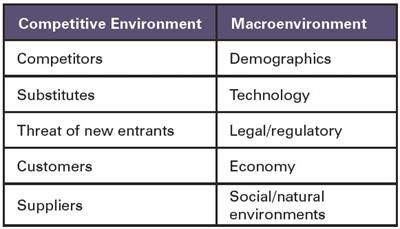Embrace the Technology Revolution
The recliner in my living room is my place of comfort – where I sit and relax to read or watch television. It is where I can feel safe, secure, and at ease. This article is about some other place: the future of work for CPAs. Technologies are merging, redefining, or erasing the lines between the digital and biological spheres. This type of change will affect our profession. The question is, how?
by Edward R. Jenkins Jr., CPA, CGMA Mar 4, 2019, 12:16 PM

The world is changing how we work and what we do at an ever-increasing rate. The World Economic Forum refers to this time as the Fourth Industrial Revolution.
Here is a part of their explanation: “We stand on the brink of a technological revolution that will fundamentally alter the way we live, work, and relate to one another. In its scale, scope, and complexity, the transformation will be unlike anything humankind has experienced before. We do not yet know just how it will unfold, but one thing is clear: the response to it must be integrated and comprehensive, involving all stakeholders of the global polity, from the public and private sectors to academia and civil society.”1
The recliner in my living room is my place of comfort – where I sit and relax to read or watch television. It is where I can feel safe, secure, and at ease. This article is about some other place: the future of work for CPAs. Technologies are merging, redefining, or erasing the lines between the digital and biological spheres. This type of change will affect our profession. The question is, how?
The World Economic Forum issued a report this past fall called The Future of Jobs Report 2018.2 The report indicates that the following attributes of change are the near-term drivers of transformation in the workplace:
- Ubiquitous high-speed mobile internet connectivity
- Artificial intelligence
- Widespread use of big data analytics
- Cloud technology and storage

The state of technology is one of the elements of the macroeconomic environment, but the rapid deployment of technological advances – such as machine learning, artificial intelligence, and automation – are affecting the dynamics of each element in the two domains of the enterprise environment. From the perspective of my recliner, the rollout of technological change seems to be causing each of the other elements to accelerate as well. Technology is changing the relationships with customers, competitors, and suppliers. Business models are quickly becoming obsolete, changing the barriers of entry to many industries.
In the words of Barry C. Melancon, CPA, CGMA, CEO of the Association of International Certified Professional Accountants, the pace of change will never be slower than it is today. You may suddenly have the need for a framework from which to analyze and view the changes. You may feel the need to take some time and make a list of the big changes you see coming, and think about how the changes will affect CPAs in practice.
I hope you do.
To some degree, we all need to make an effort to see what will happen. As Kimberly N. Ellison-Taylor, CPA, CGMA, immediate past chair of AICPA’s board of directors, has said, we need to “outpace the pace of change.” She recommends three things to accomplish that goal: be agile, up-skill, and expand.4
Be the Change Maker
So, how does one outpace the pace of what seems to be an overwhelming rate of change? Somehow, CPAs, as trusted advisers, must be expert in helping their clients or employers outpace the changes in their industries.In some regard, the first step to becoming excellent in change management is an optimistic attitude toward change. Then adopt best practices to manage organizational, professional, and personal change. Also, be an intentional environmental scanner. You probably do this already as a reflex, as you scan The Wall Street Journal each day, get daily podcast briefings, and check specialty-specific news. Simply turn this process into an active habit and best practice.
Technology, of course, is key. Expect (and therefore plan) to move more and more activities to cloud-based platforms. Also, invest in data management and analysis tools and training. Check out the learning paths in Lynda.com, for example, or PICPA’s courses in Excel and data analysis. Have a strategy in place to monitor industry-specific and general technological changes for their effects on your business and those of your clients:
- Identify and adopt machine learning, augmented reality, and virtual reality tools.
- Expect and plan for rapid deployment of stationary robots, nonhumanoid land robots, and fully automated aerial drones; and the corollary machine-learning algorithms/artificial intelligence that will drive them.
- Expect and plan for a changing geography of production, distribution, and value chains.
- Understand that, as we move into this frontier, an ever-increasing amount of work will be performed by machines rather than people. That change will create a reskilling imperative. Clar Rosso, vice president of member learning and competency at the AICPA, often states this in the form of a mandate: “Learn. Unlearn. Relearn.”
- The nature of work and corollary skill sets will change, causing disruption in the source and quality of workers.
- Workers who do not reinvest will be left behind.
- Companies that do not reinvest in their workers will be less able to adapt.5
Revisit the leverage model. That means developing and maintaining a dynamic system or decision framework that assists you in choosing to retain work, outsource work to a network of provider partners, or automate/purchase a system. The Future of Jobs Report 2018 approaches the concept somewhat differently: it recommends a comprehensive “augmentation strategy,” where businesses look to use the automation of some job tasks to complement and enhance their human workforce’s comparative strengths, and ultimately enable and empower employees to extend to their full potential. Rather than being narrowly focused on automation-based labor cost savings, an augmentation strategy takes into account the broader horizon of value-creating activities that can be accomplished by human workers, often in complement with technology, when they are free of the need to perform routinized, repetitive tasks and better able to use their distinctively human talents.
The changing leverage model will obviously change our economic model. In other words, when the value generation capacity shifts from “hours generated to produce an output” to “systems and outcomes delivered,” we will need a different economic model for pricing services and value, allocating costs, and determining profits and rewards to providers/owners.
A more technological business environment will require greater levels of understanding. Invest in education. Make sure public schools are adequately funded, support your alma mater, give to the Pennsylvania CPA Foundation, and invest in reskilling. According to The Future of Jobs Report 2018, in addition to technology and data-related skills, the following skills also will be in high demand:
- Creativity
- Originality
- Initiative
- Critical thinking
- Persuasion and negotiation
- Attention to detail
- Resilience
- Flexibility
- Problem-solving
Finally, recognize that the legal environment – legislative, regulatory, and judicial – will struggle to keep up with the dazzling pace of change. Just consider how the world has struggled to gain consensus on the taxation of the digital economy over the last two decades. Despite legislators’ best efforts, much of the lawmaking during this technological revolution may occur in the courtroom.
After just starting to think through the vast changes rapidly advancing toward us, it seems sitting in my recliner is much more comfortable than thinking about what I need to do to outpace the pace of change. Since I’m not ready to retire, I might want to put that recliner in storage.
1 Klaus Schwab, “The Fourth Industrial Revolution: What It Means, How to Respond,” World Economic Forum (Jan. 14, 2016).
2 www.weforum.org/reports/the-future-of-jobs-report-2018
3 Michael E. Porter, Competitive Strategy: Techniques for Analyzing Industries and Competitors, 1980.
4 Kimberly N. Ellison-Taylor, “Three Ways to Outpace Change in Extraordinary Times,” Association of International Certified Professional Accountants.
5 Based largely on excerpts from The Future of Jobs Report 2018.
Edward R. Jenkins Jr., CPA, CGMA, is a professor of practice in accounting at Pennsylvania State University in University Park, a tax consultant for Boyer & Ritter Certified Public Accountants & Consultants in State College, and a member of the Pennsylvania CPA Journal Editorial Board. He can be reached at erj2@psu.edu.
For more PICPA coverage of the technology revolution in the accounting profession, be sure to read the special digital-only edition of the Pennsylvania CPA Journal. The issue will focus exclusively on technology and the opportunities it offers CPAs. Look for the digital-only edition in your inbox in late April.

